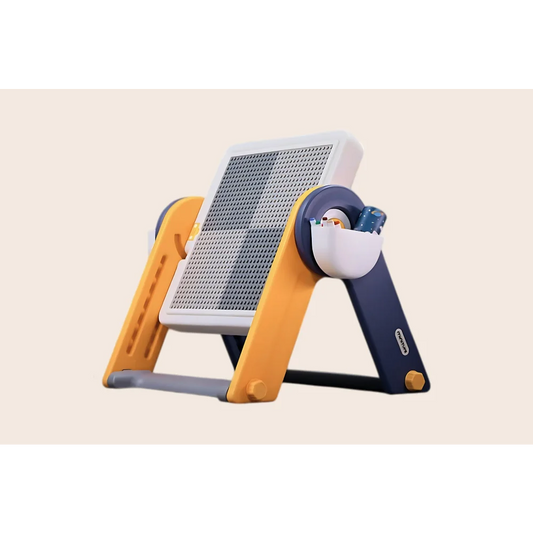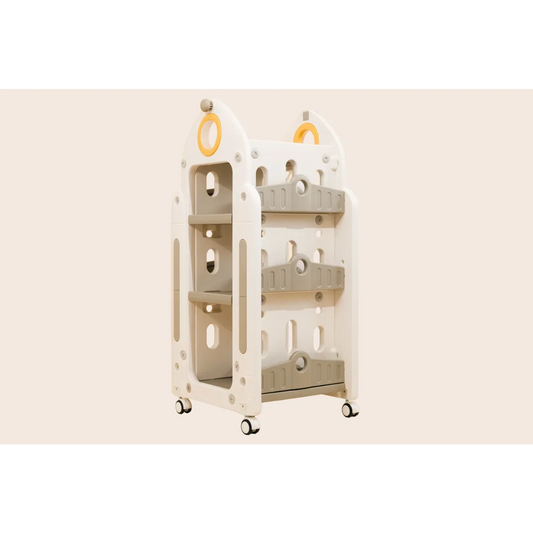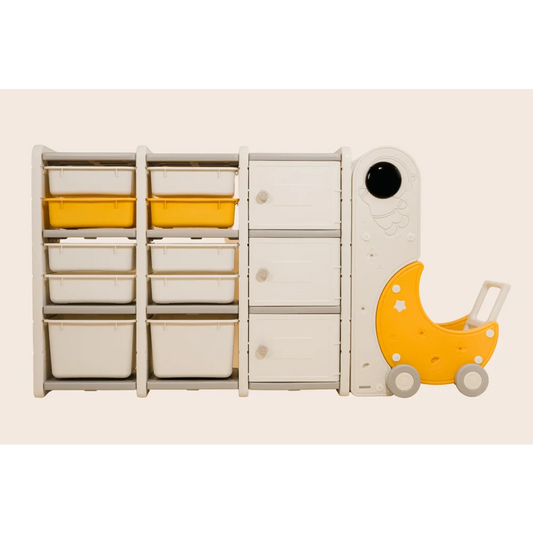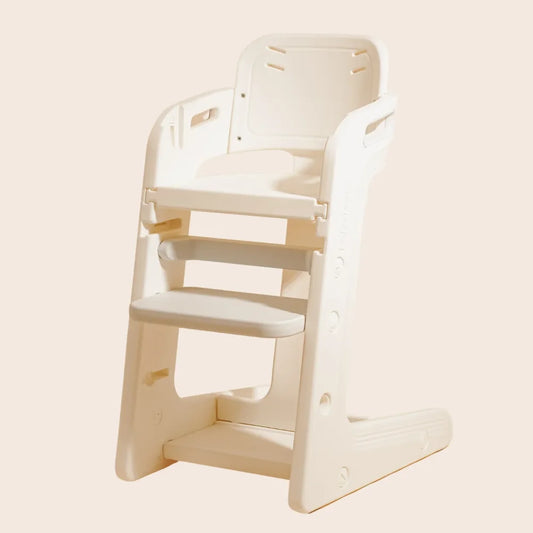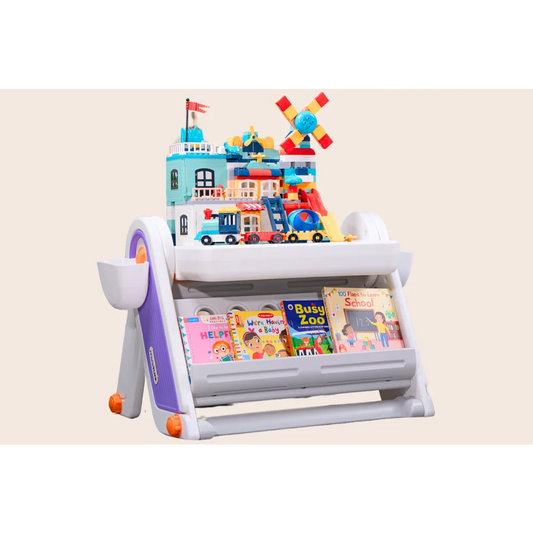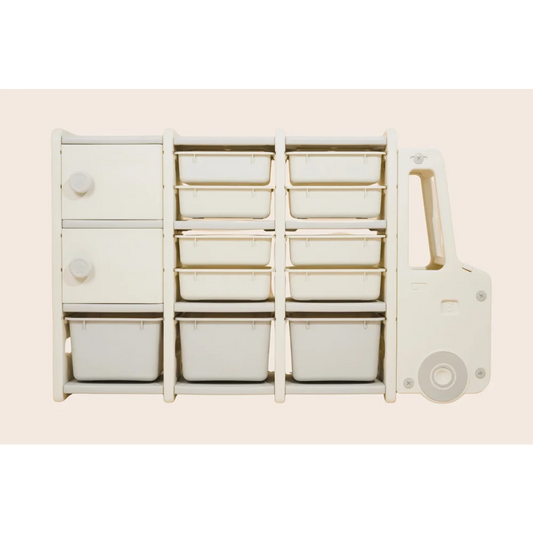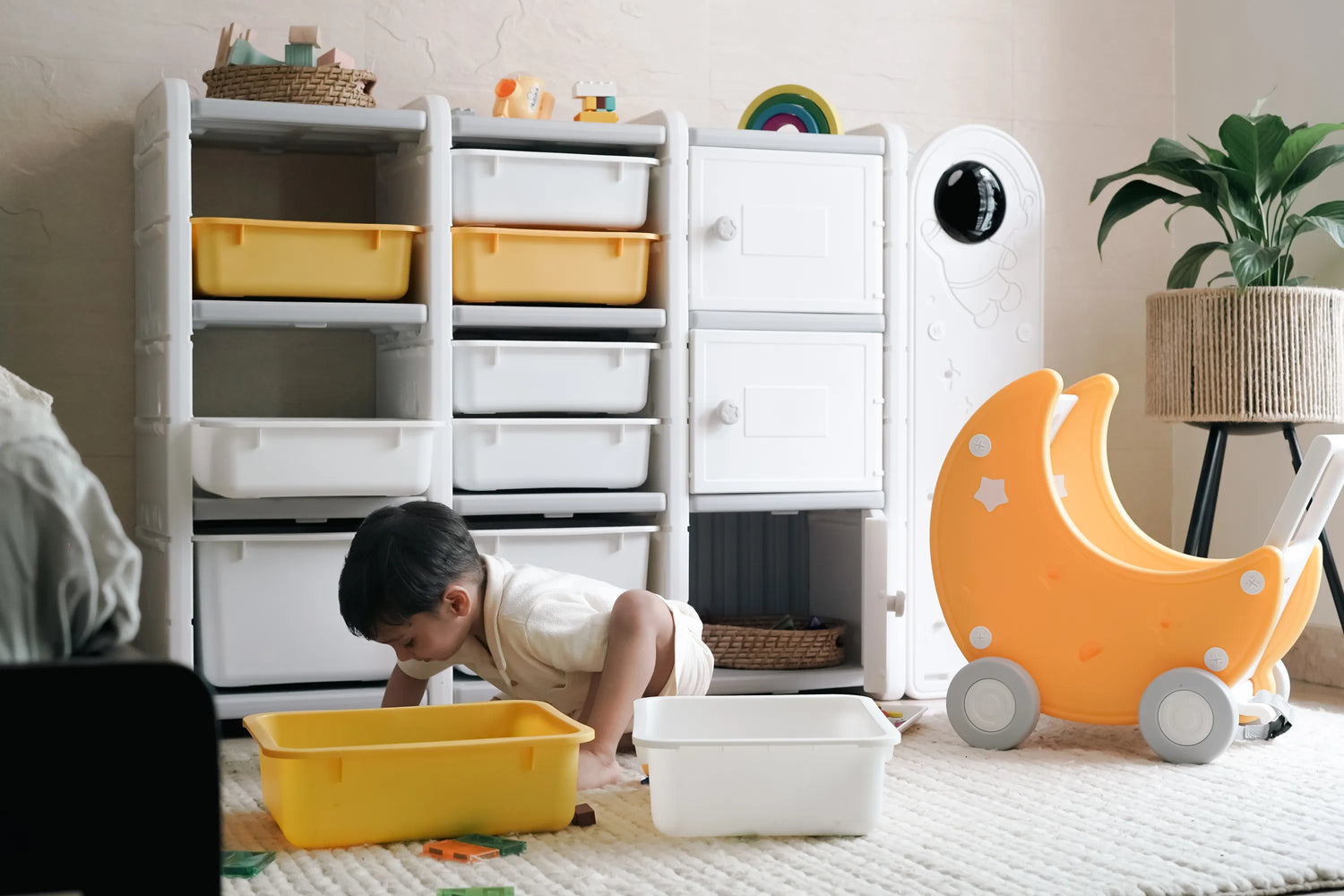
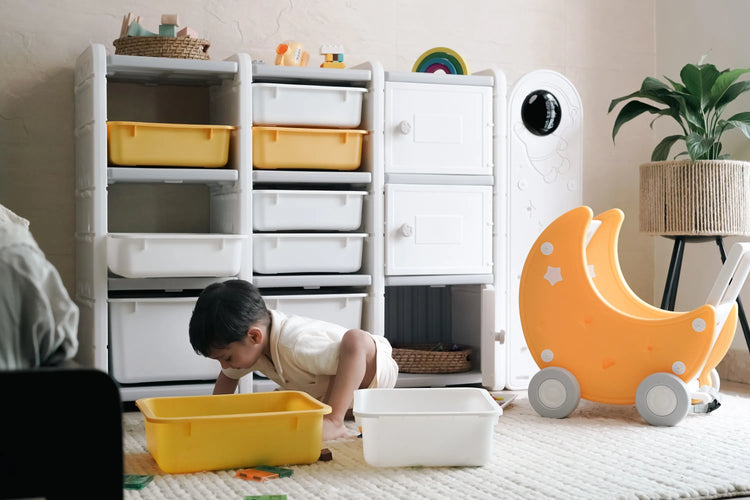
Zones of Independence: How to Design a Play Corner that Actually Works
Zones of Independence: How to Design a Play Corner that Actually Works
- By Sanaa Syed

A play corner doesn’t just entertain, but nurtures. One where they explore, imagine, and, most importantly, do things on their own.
The truth is, toddlers don’t need more stuff. They need spaces that meet their pace - fast, messy, curious, and ever-changing.
So, how do you create a play zone that actually works?
Think Beyond the Toy Basket
Many of us begin with good intentions, bins for every category, labeled drawers, a Pinterest-worthy setup. But a few days in, the toys are ignored, and your toddler’s back to clinging to your leg.
Instead of focusing on what’s in the play corner, try focusing on what the space says. Does it invite movement? Does it encourage problem-solving? Does it whisper “go ahead, you’ve got this”?
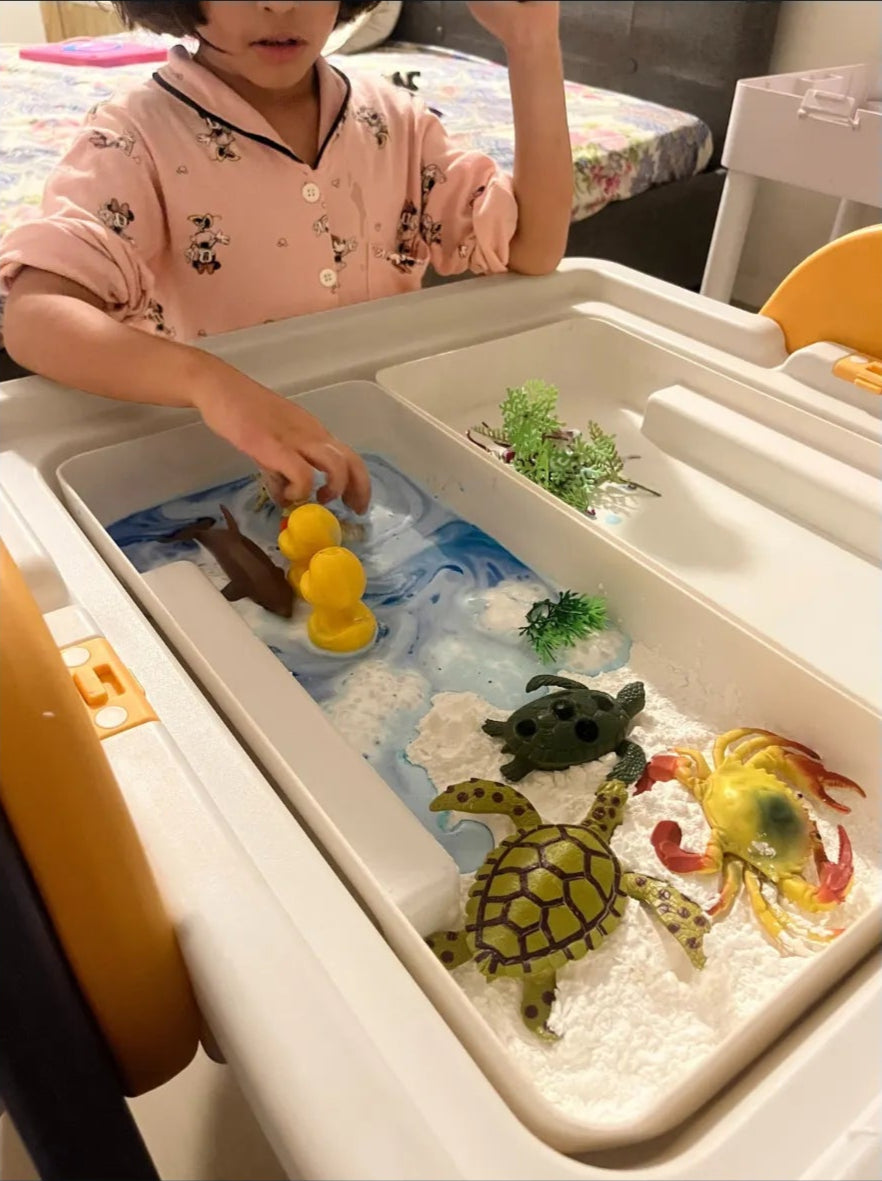
A foldable toddler desk that becomes whatever their play needs it to be - an art space, a snack spot, a place to line up all their animal figurines. One day it’s a doodling zone, the next, a calm sensory bin area. Something like a FlexDesk fits seamlessly into real-life routines while still giving your child something that feels entirely theirs.
It’s not just about keeping them busy. It’s about giving them ownership.
Make Everything Reachable - Not Just the Toys
An often-overlooked detail in play zones is accessibility. Can your child reach their favorite books without asking for help? Can they put things back where they belong?
A smartly designed rotating bookshelf, like a Rocket Bookshelf - helps here. Low enough for toddlers, with storage that spins, it puts everything within arm’s reach. Add in the wheels for easy moving between rooms, and you’ve got something that grows along with your routines - whether it’s bedtime stories or quiet reading time in a sunny corner.
When kids can reach what they want, they start making decisions on their own. That’s where the magic of independent play begins.
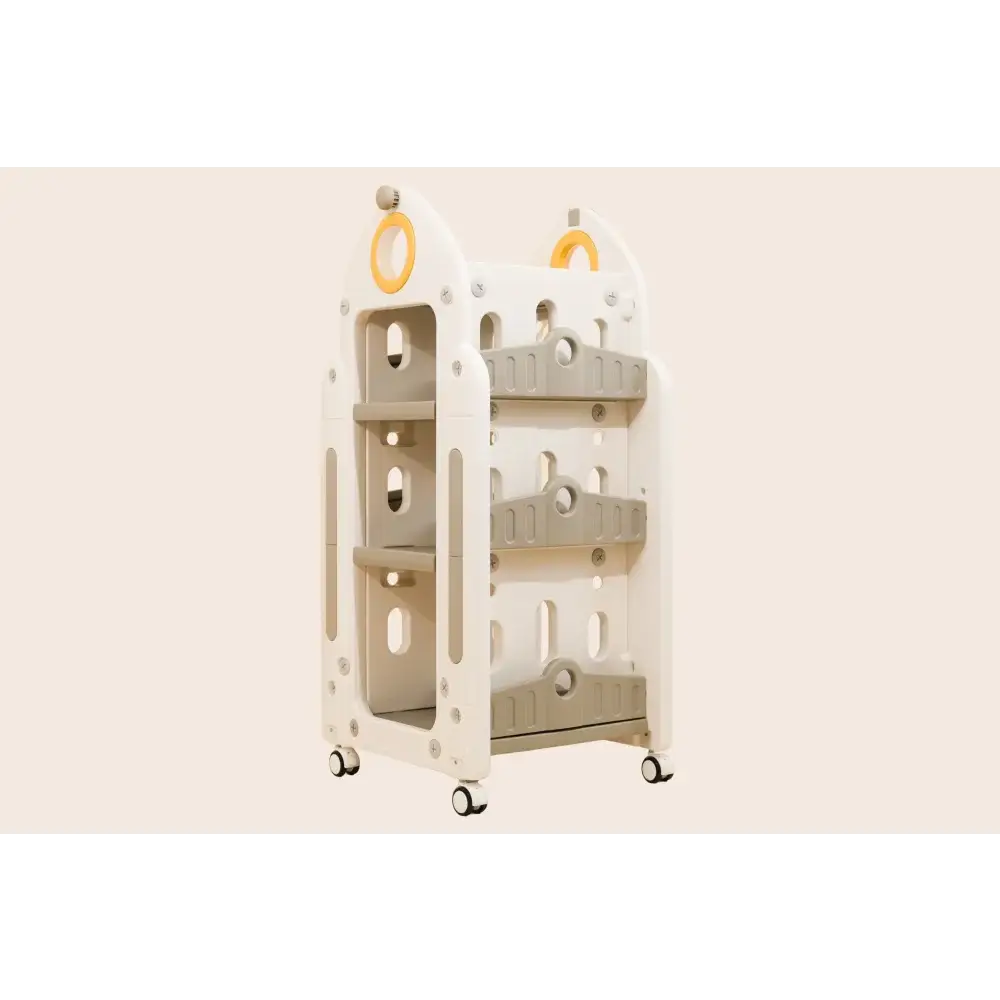
Small Space? Go Vertical and Multifunctional
Not every home has a spare room for play. And that’s okay. The secret to a functional play corner in small spaces is using the vertical space and choosing items that do more than one thing.
A climbing frame might seem like a luxury in a compact home, but multifunctional options like a Multi-Pikler fold down when not in use, giving you the best of both worlds - active play when it’s needed, and clear floors when it’s not. Bonus: it doubles as a storytelling tent or quiet reading nook.
The more a piece of furniture adapts, the less clutter you need.
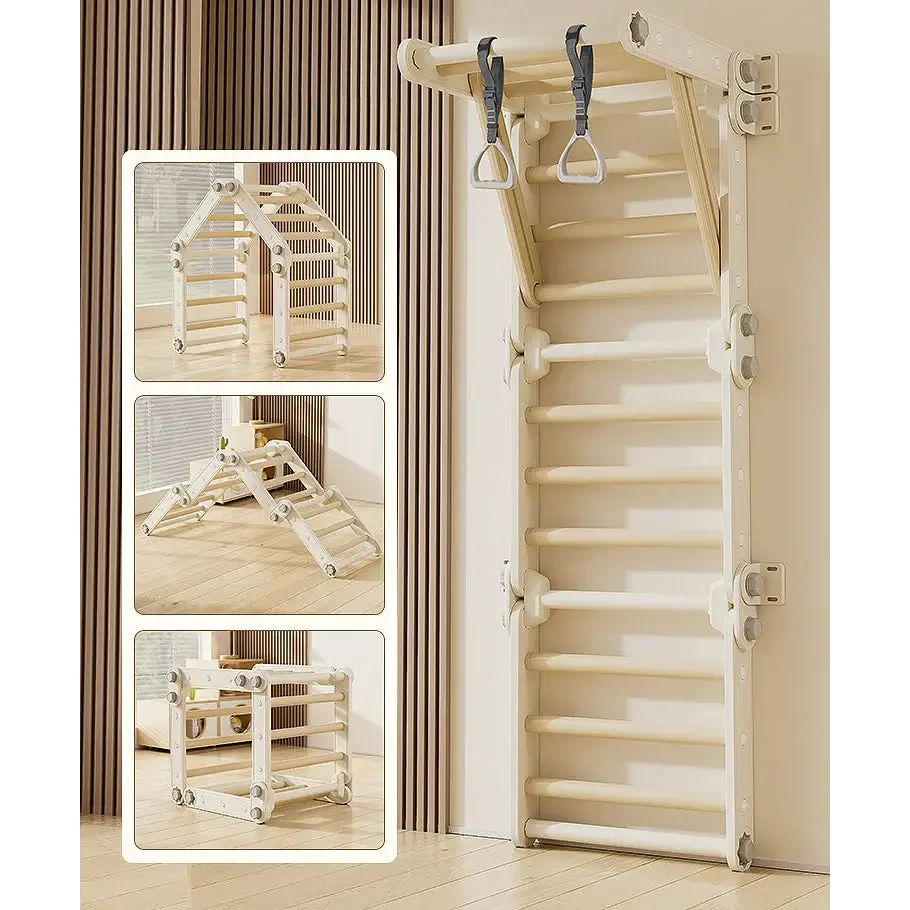
It’s Not Just About Pretty. It’s About Purpose.
Of course, we all want a space that doesn’t look like a toy store exploded in the living room. But designing for independent play means loosening our adult ideas of “neat” and leaning into systems that work for our kids - not just us.
Instead of hiding everything behind doors, try a few low, open baskets. Showcasing a limited set of toys - ideally rotated every few days, helps children focus. They play longer when they aren’t overwhelmed by options.
And when a space is theirs - truly theirs - they’re far more likely to keep it just the way they like it. Which is sometimes surprisingly tidy.
Learning Without the Labels
You don’t need a wall full of alphabet posters or structured “activity time” to support learning. A well-designed play space already invites it. Sorting buttons into jars? That’s math. Pretend play with a stuffed animal? That’s empathy and language development.
A fold-down desk for drawing, a rotating bookshelf full of stories, a climbing frame turned into a pirate ship - these aren’t just objects. They’re quiet invitations to learn, in the most natural way.

When Does Independent Play Really Start?
The short answer? Sooner than you think. Even a one-year-old can begin to explore their play zone in short bursts. The key isn’t expecting long stretches of silence - it’s giving them the right environment, stepping back just enough, and watching how they take the lead.
At first, you’ll still be nearby. But slowly, surely, they’ll begin to surprise you. A few minutes of solo play becomes ten. Ten becomes twenty. And one day, you’ll realize you drank your entire cup of coffee while it was still warm.

Because that’s what a good play corner does. It gives you breathing room. And it gives your child something even better - the confidence that comes from doing it themselves.
